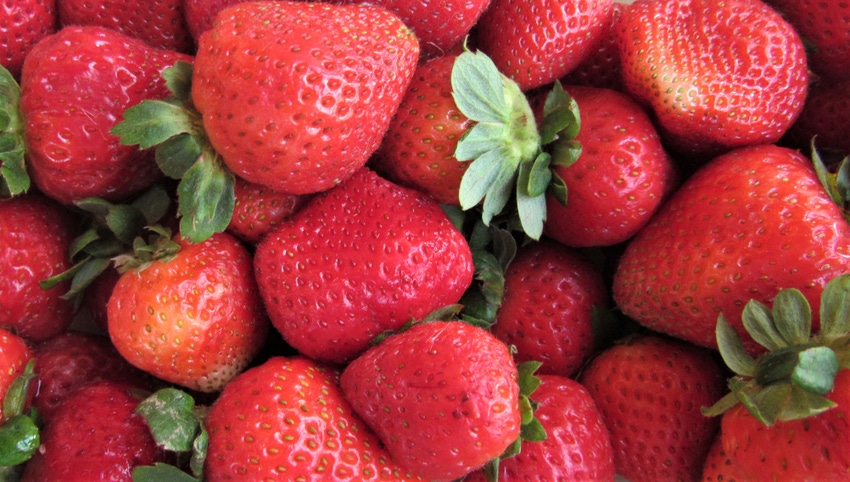June 25, 2021

Rich in bioactive compounds, strawberries have already shown their potential to decrease LDL cholesterol, blood glucose, insulin resistance, and other disease risk factors.
New research in the journal Nutrients now links a specific amount of strawberries with improved insulin response and a decrease in lipid particle concentration. Dr. Arpita Basu and her teams at the University of Nevada, Las Vegas and University of Oklahoma Health Sciences Center explored the effects of two doses of strawberry on glycemic control and lipid profile.
The Study
The 14-week randomized controlled crossover study assigned 33 adults with features of the metabolic syndrome (abdominal obesity and elevated blood cholesterol) to one of three arms for four weeks separated by a one-week washout period:
control powder beverage;
low dose 13g freeze-dried strawberry powder/day (equal to 1 serving fresh strawberries); and
high dose 32g FDSP/day (equal to 2.5 servings fresh strawberries)
The total volume of powder provided was similar for all three groups (32 g/day) and was consumed in two separate doses at least six hours apart. The participants were also asked to consume the beverage by itself and not with a meal or other snacks to prevent the confounding effects of other dietary factors. The control powder was formulated to match the calorie, macronutrient, and sensory properties of the strawberry powder.
Participants were instructed to follow their usual diet and lifestyle while refraining from eating other berries throughout the study. Body weight, height, waist circumference, and systolic and diastolic blood pressure were measured at baseline and at the end of each four-week phase of the trial.
Findings
Thirty-three participants completed the study's three intervention arms.
Consuming the high dose strawberry for four weeks significantly reduced participants’ fasting insulin (p= 0.0002) and HOMA-IR (p= 0.0003) compared to the control and low-dose phases.
Concentrations of total VLDL, LDL, and chylomicrons, as well as small VLDL and LDL particles were significantly decreased after the high-dose strawberry phase, compared to the other two phases (p< 0.0001).
Serum plasminogen activator inhibitor-1 (PAI-1) showed a significant decrease after the high-dose strawberry phase.
A borderline significant effect of treatment was noted for serum LDL cholesterol, which revealed lower values after the high-dose strawberry phase, compared to values in the baseline, control, and low-dose strawberry phases (p = 0.05).
The study’s authors theorize the fiber, phytosterols, and polyphenols found in strawberries may be responsible for these favorable outcomes.
No treatment effects were noted for serum glucose, HbA1c, serum total cholesterol, HDL cholesterol, triglycerides, body weight, BMI, waist circumference, or blood pressure related to the strawberry intervention.
Conclusion
The findings suggest that consuming 2.5 cups of strawberries for just four weeks may significantly improve insulin resistance, lipid particle profiles, and serum PAI-1 in adults with metabolic syndrome.
For those managing their diet to reduce diabetes and CVD risk, identifying strawberries as a food to include more often to help achieve those goals may be welcome news.
Source: California Strawberry Commission, which is solely responsible for the information provided and is wholly owned by the source. Informa Business Media and all its subsidiaries are not responsible for any of the content contained in this information asset.
You May Also Like




